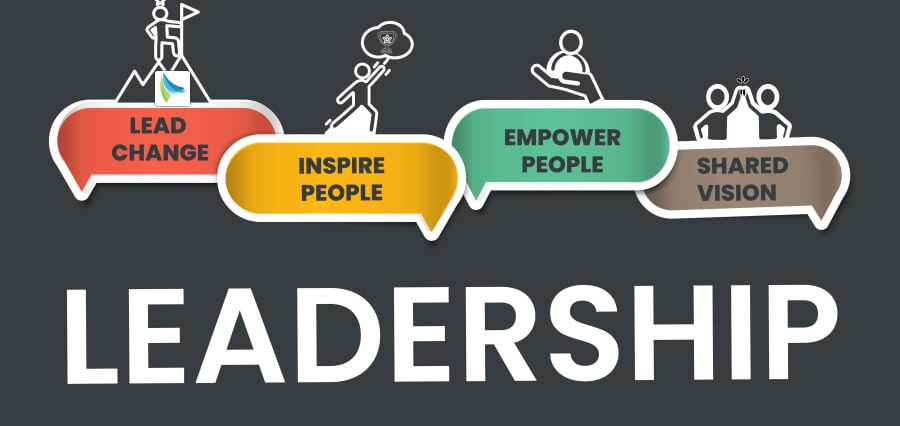Growth has become a strategic necessity and distinguishing characteristic of high-performing organizations within the rapidly changing and competitive global market. Incremental growth, or short-term results, will no longer suffice. Visionary growth, the kind that propels firms ahead of the horizons of today and to market dominance, must be planned for, and dedicated to innovation. It is not just designed to respond to current conditions but also to create future trends in a positive direction. They are exact blueprints bridging creativity, flexibility, and authority to long-term success. They allow organizations to embark on the process of moving from managing the marketplace to leading change in their markets. When done effectively, these tactics enable companies to reap new value, expand more competitively, and thrive once and for all in a more complicated world.
Constructing A Visionary Mindset
Each successful growth approach begins with the right attitude — one of transformation by moving forward, challenging conventional wisdom, and taking advantage of opportunity in a climate of uncertainty. A vision-based leadership system enables leaders to move beyond short-term capability and see what the company can become. It involves horizon scanning ahead of the next new wave of trends, defining unserved customer needs, and imagining new opportunity which other people are still not yet able to see. This is the kind of thinking that creates breakthrough innovation and allows businesses to lead rather than follow.
As important or maybe even more important is the ability to plant this kind of thinking into the business. Then all levels of people are exchanging and comprehending the vision, they get more charged and empowered to perform. Developing questioning culture, learning culture, and risk-taking by design leads to the type of environment where innovation occurs and failure is an open door to victory. Leadership is the primary tool in calling a living for attaining a vision, connecting it with an organization’s core values, and living the behavior to propel that vision.
Creating Adaptive Growth Strategies
With all this technology change and customer needs shifting so quickly, a company has to be able to adjust. Growth strategies themselves need to be adaptive, from a design that will adapt to the market landscape. Flexibility can be made possible through real-time examination of up-to-date facts, customer feedback, and contingency planning for various futures. Those firms which are adept at doing these will manage to understand opportunity before it happens and make gear change if necessary without getting lost from direction strategy. Diversification is also one of the leading adaptive strategy development areas.
The firm needs to follow a number of routes for expansion, including business diversification into derivative business, new sources of revenue through new products, and exploiting the internet channel. Organically through product innovation or organically through mergers and acquisition and alliances, in this context what is being discussed is creating a diversified portfolio of opportunity for expansion. By this approach, minimum reliance on some specific initiative and immunity to change or disruption are guaranteed. Innovation should also be embedded in the strategy. While revolutions can transform markets, customer- and incremental innovations help create enduring value.
Executing for Long-Term Success
Execution brings the strategy to life. No matter how much is planned in advance on a growth plan, it will ultimately be a question of intense, relentless execution. It is a question of setting clear goals, measuring key performance indicators, and being adamant on resources for measurable returns. Executives need to ensure that their businesses have the ideal mix of talent, technology, and operating capability behind them to facilitate long-term execution. Scalability is another corner stone of sustainable growth. Companies that grow quickly without infrastructure in place, by definition, pay a penalty on cost control, quality, or delivery.
Investment in scalable systems such as automation, platform-based systems, and cloud-based systems allows companies to keep operating with operational excellence while learning how to absorb increasing demands. Organizations must create robust pipelines of leadership and invest in reskilling their employees ahead of future requirements. Long-term success of a company is more than frequently a direct consequence of the degree to which it is able to attract, retain, and develop talent and drive them to innovate and deliver with excellence. Successful change management is another delivery imperative driver. As the growth strategy is being executed by the teams, they could be subject to structure, process, or cultural transformation.
Conclusion
Visionary growth strategies are not fueled by chasing every new fad or establishing inspirational goals without intent. It is one of balancing a big but achievable vision with adaptive, evidence-based practices and strong implementation performance. This harmony allows companies to create long-term value and resilience amid transformation times. Vision-driven growth has become a signature strength of top companies in the era of ceaseless disruption and hyper-competition. Growth-driven companies, with agendas responsive to change, and with intentional progress have the best possibility to be their own masters. Their achievements are not accidents but the product of deliberate design, sage stewardship, and relentless momentum into the future.
Read Also: How Automotive Leadership Must Evolve for Industry 4.0?












